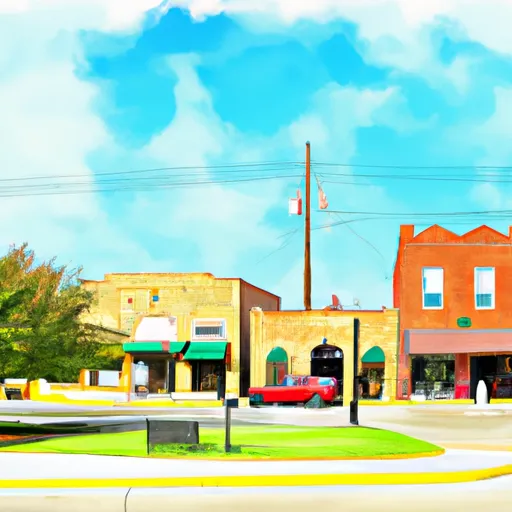-
 Snoflo Premium
Snoflo Premium
Get unlimited access to all our content
With no Ad interruptions! - Start Your Free Trial Login with existing account
Maple
Eden Index
Climate
9.1
•
Recreation
•
Community
•
Safeguard
3.6/10

Maple, Texas is a small town located in the southern part of the state. The climate in Maple is characterized by hot summers and mild winters. Summers can be hot and humid, with temperatures often exceeding 90°F (32°C), while winters are generally mild, with temperatures rarely dropping below freezing. The area experiences moderate rainfall throughout the year, with occasional thunderstorms during the summer months.
Hydrologically, Maple is situated near the Clear Fork Trinity River, which runs along the town's eastern border. This river serves as a water source for the community and supports various aquatic ecosystems. Additionally, Maple is surrounded by several lakes and reservoirs, including Lake Worth and Eagle Mountain Lake, offering opportunities for boating, fishing, and water sports.
Outdoor recreation enthusiasts can take advantage of the numerous parks and natural areas in and around Maple. These areas provide opportunities for hiking, camping, picnicking, and wildlife viewing. One popular destination is the Eagle Mountain Park, known for its scenic trails and diverse wildlife. Maple, Texas offers a pleasant climate, beautiful hydrological features, and a range of outdoor activities, making it an inviting place for nature lovers and outdoor enthusiasts.
What is the Eden Index?
The Snoflo Eden Index serves as a comprehensive rating system for regions, evaluating their desirability through a holistic assessment of climate health, outdoor recreation opportunities, and natural disaster risk, acknowledging the profound impact of these factors on livability and well-being.
Climate Health Indicator (CHI): 9.1
Maple receives approximately
429mm of rain per year,
with humidity levels near 75%
and air temperatures averaging around
15°C.
Maple has a plant hardyness factor of
7, meaning
plants and agriculture in this region tend to thrive during the non-winter months.
By considering the ideal temperature range, reliable water supplies, clean air, and stable seasonal rain or snowpacks, the Climate Health Indicator (CHI) underscores the significance of a healthy climate as the foundation for quality living.
A healthy climate is paramount for ensuring a high quality of life and livability in a region, fostering both physical well-being and environmental harmony. This can be characterized by ideal temperatures, reliable access to water supplies, clean air, and consistent seasonal rain or snowpacks.
Weather Forecast
Streamflow Conditions
Brazos Headwaters
Area Rivers
Brazos Headwaters
Snowpack Depths
Brazos Headwaters
Reservoir Storage Capacity
Brazos Headwaters
Groundwater Levels
Recreational Opportunity Index (ROI):
The Recreational Opportunity Index (ROI) recognizes the value of outdoor recreational options, such as parks, hiking trails, camping sites, and fishing spots, while acknowledging that climate plays a pivotal role in ensuring the comfort and consistency of these experiences.
Access to outdoor recreational opportunities, encompassing activities such as parks, hiking, camping, and fishing, is crucial for overall well-being, and the climate plays a pivotal role in enabling and enhancing these experiences, ensuring that individuals can engage in nature-based activities comfortably and consistently.
Camping Areas
| Campground | Campsites | Reservations | Toilets | Showers | Elevation |
|---|---|---|---|---|---|
| Yoakum County Park | 16 | 3,604 ft |
Nearby Ski Areas
Catastrophe Safeguard Index (CSI):
The Catastrophe Safeguard Index (CSI) recognizes that natural disaster risk, encompassing floods, fires, hurricanes, and tornadoes, can drastically affect safety and the overall appeal of an area.
The level of natural disaster risk in a region significantly affects safety and the overall livability, with climate change amplifying these risks by potentially increasing the frequency and intensity of events like floods, fires, hurricanes, and tornadoes, thereby posing substantial challenges to community resilience and well-being.
Community Resilience Indicator (CRI):
The Community Resilience Indicator (CRI) recognizes that education, healthcare, and socioeconomics are crucial to the well-being of a region. The CRI acknowledges the profound impact of these elements on residents' overall quality of life. By evaluating educational resources, healthcare accessibility, and economic inclusivity, the index captures the essential aspects that contribute to a thriving community, fostering resident satisfaction, equity, and social cohesion.

